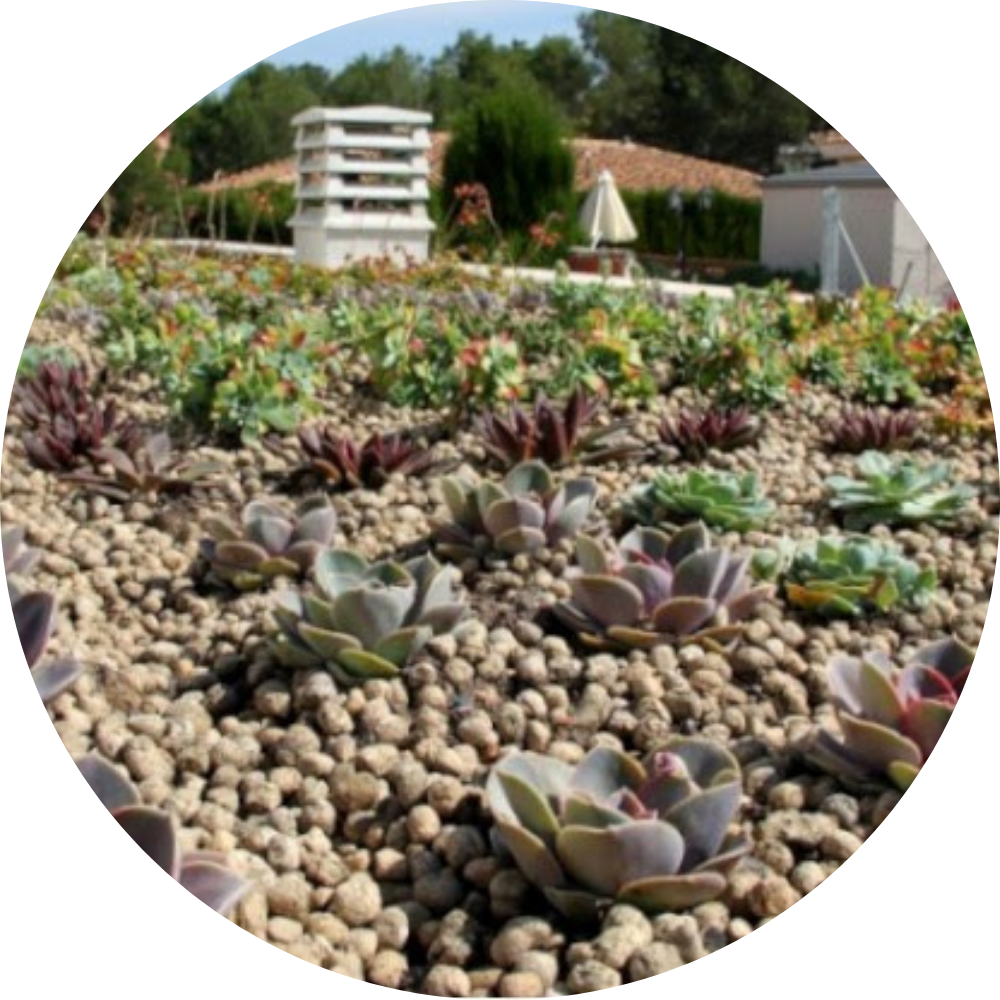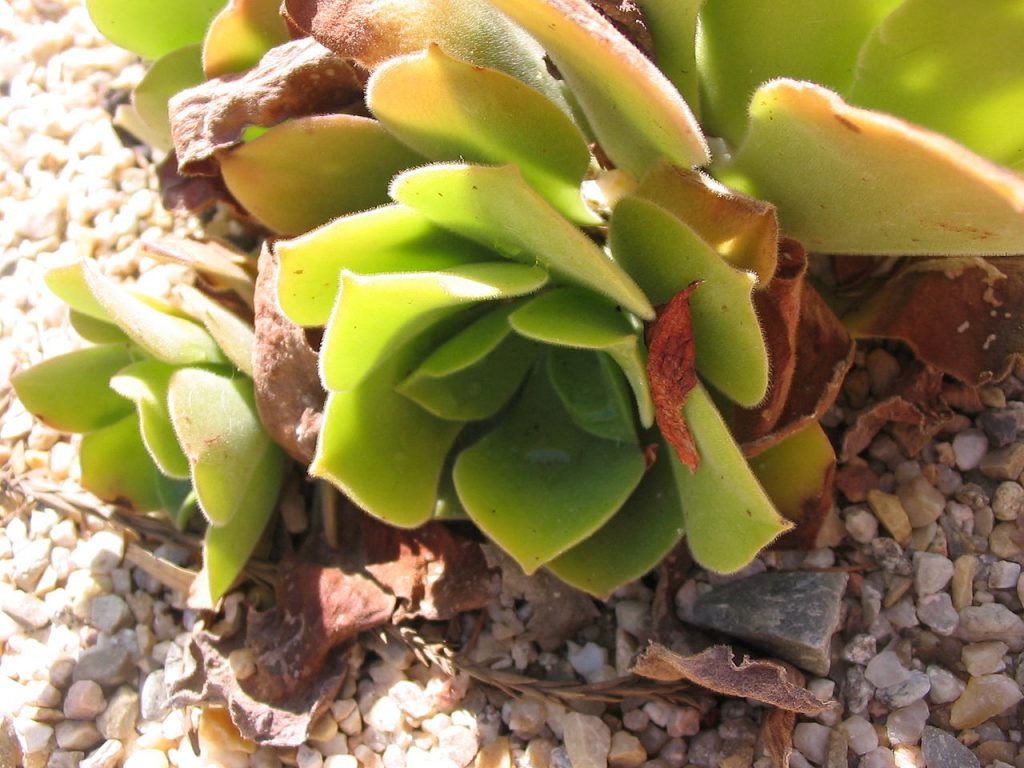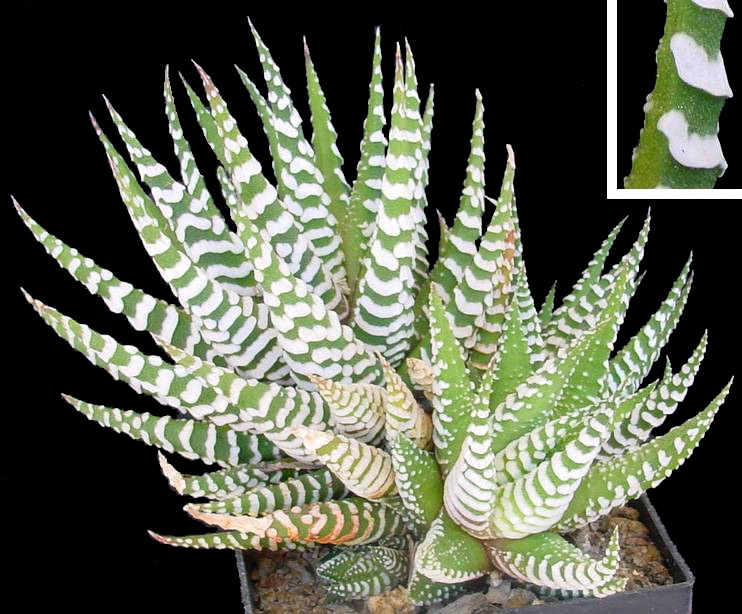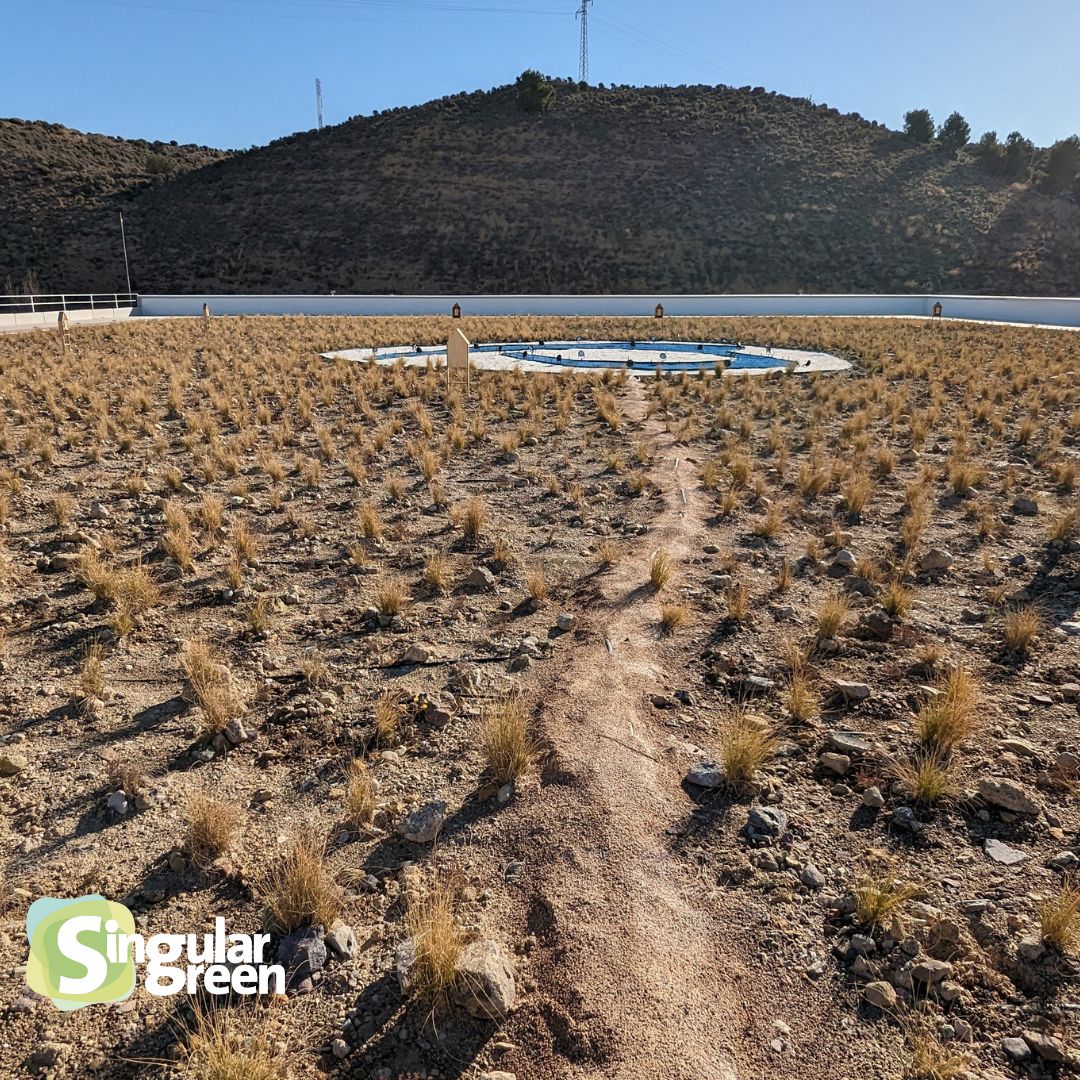What are succulents and why are they so popular?
Succulents, also known as succulent plants, are a family of plants that have caught the attention of gardeners and interior decorators because of their unique ability to store water in their leaves, stems or roots.
This mechanism allows them to survive extreme drought conditions , making them very hardy and easy to maintain.

In addition, their incredible variety of shapes, colours and sizes has made them especially popular for creating vertical gardens and decorative plant paintings.
At SingularGreen, we consider succulents to be a very good choice for designing nature-based solutions, due to their ability to thrive in low-maintenance environments and their limited need for watering.
This resilience is due to their ability to store water, allowing them to be watered sporadically without compromising their health. In addition, many of these plants have a small root system, making them ideal for low substrate environments such as rock gardens or vertical gardens.
Popular types of succulents for your garden
The variety of succulent species is impressive.
From small compact plants to large rosettes, the options are endless, allowing for endless combinations when designing any green space.
Below, we highlight some of the most popular species that SingularGreen uses in its projects.
Echeverias: The queens of vertical gardens
Echeverias are one of the most recognisable and appreciated succulents for their perfect symmetry and their ability to bring vibrant colours to the garden.

With shades ranging from green to purple and grey, they are ideal for forming visually appealing patterns in vertical gardens.
We highlight their versatility and resistance to direct sunlight, an essential feature for any outdoor garden.
Aeonium and its great resistance
Aeoniums are succulents that stand out for their sturdy stems and rosettes that can grow in several layers. These plants are perfect for filling larger spaces in vegetable boxes or vertical gardens, as their structure adds volume to the design.

We at SingularGreen have used this species on many occasions, highlighting its durability in environments with direct light and shallow substrate.
Haworthias: Beauty in small format
Haworthias are small but very attractive plants. Often used indoors in small pots, they can also form part of larger succulent boxes thanks to their compact shape and low light requirements compared to other species.

SingularGreen does not recommend their main use in outdoor gardens or roof gardens due to their preference for semi-shade, these succulents can be an excellent choice for partially lit areas.
Essential care for succulents
One of the great attractions of succulents is their low maintenance, but this does not mean that they can be neglected completely.
Below, we explain the most important things to keep in mind when it comes to caring for these plants.
Light requirements: Full sun is vital!
Full sun is one of the fundamental requirements for most succulents. SingularGreen stresses that many projects fail because succulents are placed indoors or in low light areas, resulting in weak and discoloured plants.
While they can tolerate some shade, to ensure healthy growth and a good visual appearance, it is imperative to place them in areas where they receive direct sunlight.
If they are placed in offices or living rooms, they will soon begin to deteriorate, making the need to keep them outdoors obvious.
Proper watering for your succulent plants
Although they are hardy plants, succulents require careful watering. A common mistake is to overwater them, which can lead to root rot.
SingularGreen always advises spot watering, making sure the substrate is completely dry before watering again.
Thanks to their water storage capacity, these plants can be maintained for long periods without the need for additional hydration, making them ideal for plant boxes in dry areas.
The best substrate for succulents
The substrate is key to the successful cultivation of succulents. SingularGreen stresses the importance of using specific substrates for succulent plants, which are well aerated and well drained.
Succulents thrive in soils that do not retain much moisture, so avoiding substrates with a high amount of organic matter or that remain damp is crucial.
In addition, the use of a low nitrogen fertiliser is another key to maintaining the health of these plants. A specialised fertiliser for cacti or succulents, rich in phosphorus and potassium, will be the best ally to encourage their growth.
How to design plant pictures with succulents
One of the most interesting uses of succulents is in the creation of tableaux végétales and vertical gardens. Thanks to their variety of shapes, colours and resistance, they are ideal for this type of decorative installation.
Benefits of succulents in vertical gardens
SingularGreen has implemented vertical gardens with succulents in a few projects, but we are looking forward to installing many more as they have great capacity to maintain a fresh and colourful appearance without requiring extensive maintenance. Being plants that store water and survive with little substrate, they are perfect for this type of design. In addition, their resistance to adverse conditions such as heat or lack of water makes them very suitable for outdoor spaces.
Selection of species and colours
When designing a planting, we should always consider the wide range of colours and textures that succulents offer.
Purple, green and grey Echeverias, together with species such as Jauborcias with pointed or more rounded leaves, allow for a lively design that not only adds beauty from the start, but also evolves over time, generating volume and changing its appearance seasonally.
Specific fertilisers for succulents
Using a succulent-specific fertiliser is essential for plants to maintain their vitality and grow properly. These fertilisers, rich in potassium and phosphorus, promote healthy development and prevent succulents from rotting due to excess nutrients.
Creating a green space with succulents not only adds a unique decorative touch, but also guarantees durability and low maintenance, as long as basic care such as adequate light, watering and substrate are taken into account.
SingularGreen is committed to succulents not only as ornamental plants, but also as key components in sustainable green design projects.
Sustainable vertical gardens with succulents
One of the most impressive uses of succulents in Nature Based Solutions is in vertical gardens.
These gardens not only beautify the environment, but also provide environmental benefits such as improving air quality, reducing heat in cities and increasing biodiversity.
Benefits of succulents in vertical gardens
SingularGreen has implemented numerous vertical garden projects using succulents for several reasons:
- Low maintenance: These plants require little water, which reduces the frequency of watering and minimises maintenance costs.
- Small root system: Succulents can grow in small spaces, such as the fine substrates found in vertical gardens.
- Climate resistance: These plants tolerate direct sun and high temperatures well, making them perfect for exposed outdoor facades.
In addition, the diversity of species and colours offered by succulents makes it possible to create vertical gardens that are not only functional, but also aesthetically impressive.
The combinations of greens, purples, greys and pinks add visual dynamism to any space.
Water efficiency
One of the great challenges in cities is the efficient use of water, especially in the creation of green areas. Succulents, thanks to their ability to store water, allow the creation of vertical gardens that need minimal watering, making them ideal for areas where water is a scarce resource. SingularGreen stresses that, with succulents, vertical gardens can be watered sporadically without compromising the health of the plants.
Green roofs with succulents: Sustainability from on high
Green roofs, also known as green roofs, are another nature-based solution where succulents feature prominently. These roofs not only improve the energy efficiency of buildings by reducing heat and improving insulation, but also help manage stormwater and increase biodiversity in urban environments.
Advantages of succulents on green roofs
Succulents are an exceptional choice for green roofs for several reasons:
- Light weight: Having a small root system and a low substrate requirement, succulents do not impose an excessive load on roof structures.
- Drought resistance: On green roofs, where access to water may be limited, succulents thrive because of their ability to survive with little watering.
- Temperature control: Succulents help reduce the heat island effect by cooling roof surfaces, which in turn reduces the demand for air conditioning in buildings.
At SingularGreen, we believe that succulents are essential to designing sustainable green roofs, which not only provide environmental benefits but also maintain their visual appeal over time.







